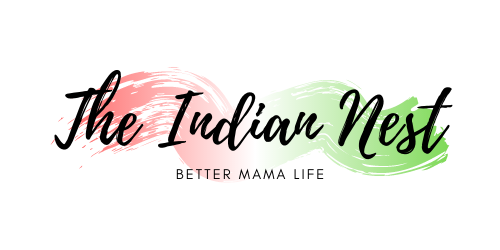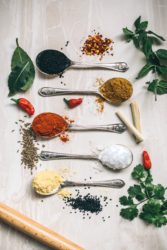Are you a beginner in Indian cooking? Now you may be thinking about the basic, essential spices you need to buy for everyday cooking! Beginners Indian Pantry Essentials that makes Cooking Easy.
Now you have reached the right place.
This Indian pantry essential guide is exactly for you.
For those who got married and would like to start their cooking journey, I’m here to help you.

You may know that our Indian cooking is quite popular and very diverse. Don’t get overwhelmed or feel stressed.
I’m here to make it even simpler, as I told you before.
This ultimate guide for beginners Indian pantry essentials will save your life.
Before we get into pantry essentials, I would explain regional wise food distribution in Indian culture.
Indian Regional food varieties
I’m sure that you will be thorough with your region about the main staples and essential spices.
As I am from Kerala (South India), where I was born and brought up, then the food from the south will be the whole touching to my heart and soul.
At the beginning of my cooking journey, I am not aware of other state food habits.
Each state in Indian has its distinct flavor and ingredients.
Whatever region our Indian foods are almost the same, the basic cooking style is follows the same key ingredients.
North Indian Food

Outside India, North Indian food are made frequently in all restaurant.
It has a strong Mughal influence, with high dairy, milk, paneer (Indian cottage cheese), ghee, and yogurt.
Dal or paneer Makhani are popular vegetarian dishes, consisting of dal cooked in a creamy tomato sauce.
Korma is another menu staple from northern India which is a creamy curry of yogurt, cumin, coriander, a small number of cashews or almonds.
Saag paneer and palak paneer are similar dishes needs spinach, cream, and paneer for it is preparation.

Get your free printable checklist of beginners Indian pantry essentials: Click here
South Indian Food

This is where my native (Kerala) belongs to. South Indian food is different fromNorth Indian Foods.
Usually, In Kerala cuisines, you can find many dishes, ranging from the traditional sadya to seafood and non-vegetarian dishes.
Coconuts grow in abundance in Kerala, so we all use coconut and coconut milk. It is commonly taken for thickening and flavouring.
In south India (Andhra Pradesh, Kerala, Karnataka, Tamil Nadu, Telangana), kootus are three typical dishes. Sambar, rasam, and kootus are three typical south Indian foods
Do you know sambar is tamarind flavour vegetable stews that are more watery than other region’s curries?
Rasam are primarily of tomato, tamarind, and spices.

Free printable South Indian pantry checklist: Click here
West Indian Food
Western Indian cuisines are distinguished by the physical area, which includes three central regions: Gujarat, Maharashtra, and Goa.
Gujarati food tends to be sweeter and more affluent.
Maharashtra cuisines are mainly fish and coconut milk primarily cuisines.
Goan Cuisine acts as a significant colony for Portugal, making a distinctive and unique blend of Indian and Portuguese culinary touch.
East Indian Food
The East Indian region consists of West Bengal, Sikkim, Orissa, Bihar, Arunachal Pradesh, Meghalaya, Manipur, Nagaland, Mizoram, Tripura, and Assam.
Eastern India’s geography makes the cuisines a strong influence from Chinese and Mangolian cuisine.
Assam’s fish, Bengal’s sweet, Sikkim’s momos are the most popular dishes that are delighted across Eastern India.
P
Overall Eastern dishes are more lightly spiced than those from other Indian regions.
Beginners Indian Pantry Essentials for Easy Cooking
Basic key Ingredients


Rice
Rice is a staple in South India, and there are different rice varieties like sona masoori, basmati, matta, etc.
As a Keralite, I prefer matta ( short grain) for plain rice, jeerakashala for biriyani. I like to use Basmathi rice for making plans, vegetable fried rice, etc.
You can use whatever you like according to your regional state.
Flour
For making any Indian flatbread or fried bread, you need good quality wheat flour.
Many other recipes are made using regular all-purpose flour, which works great.
Rice flour type of flour that I use, especially in Kerala for making pathiri (rice roti), appam (rice pancakes).
Lentils

- Toor Dal
There are so many types of lentils, actually the beginning of my cooking adventure made me so confusing with dal types.
Toor dal is one of the widely use dal in Indian cooking
It’s a must for sambar, rasam, or dal fry.
- Yellow Moong dal
Yellow moong dal is also often used lentil.
In south India, we use it to make sweet dishes like payasam, khichdi, vegetable curries like kootu curry, etc.
All the lentils are different in flavor and nutritional content, and I would say you can use them whichever one you can get your hands on.
As you become an expert in cooking or building up your kitchen, you can stock the other two dals.
Beans

We use lots of bean varieties like chickpeas, black beans, kidney beans, red cowpeas, mung beans, etc.
Chickpeas are used in both north and south Indian dishes. Two varieties of chickpeas are Kabuli and desi.
In Kerala, we make puttu with kadala (desi chickpea) curry, one of my favorite breakfast dishes.
Oils

Photo by Cassiano Barletta on Unsplash
I mostly use coconut oil for most of my cooking. For making continental recipes. I would use olive oil, which is my favorite choice.
You can choose any good quality oil for everyday cooking according to your regional taste.
- Coconut oil
- Peanut oil (groundnut oil)
- Mustard oil
- Sesame oil (gingelly oil)
Ghee
Ghee is clarified butter, which is another fundamental fat for Indian cooking. It gives good taste and flavor to the dishes.
I feel like heaven when I get the feel of roasted coconut pieces for Pradhaman (payasam).
So just roasted cashews and raisins in ghee for giving topping for halwas. Ghee makes biriyani more delicious and creamy.
Coconut Milk
Coconut milk is an essential ingredient to make Indian stews and south Indian curries, especially in Kerala.
You can make it by pressing and grinding coconut meat if you are a beginner. The ultimate guide about coconut buying and storing may help you.
Yogurt/Curd
Yogurt is used as a thickening agent for most North Indian dishes.
Curd is used to making some of the South Indian dishes (Moru curry, thairusadam, etc.)
Curd and yogurt differ by a small thing, and yogurt contains double the curd protein amount.
You can use plain greek yogurt from stress or make fresh yogurt from home.
Spices
Here are the magic ingredients of Indian foods. I can’t think about any recipe without these spices. You can play with the combination of the right herbs for a delicious recipe.
Turmeric

Image by Steve Buissinne from Pixabay
Turmeric is an essential ingredient throughout India, used extensively in dals, meat, seafood, and all vegetable dishes.
You can see Turmeric gives it’s characteristic vibrant yellow color and warn flavor.
Usually, my mother makes fresh turmeric powder at home, and she gives me some for my cooking.
The fresh turmeric root from our farmland is boiled, dried, and ground to a deep- yellow powder.
Red chilli powder

You can see two varieties of red chili powder, which is added to almost all Indian dishes that give the needed heat.
- Red Chilly powder (The regular hot chili)
- Kashmiri Chilli powder( The mild Kashmiri chili powder)
Coriander powder
I think coriander forms the core of most spice mix, mainly bringing the curries’ flavours. It follows primarily along with the red chilli powder for most dishes.
Cumin seeds
Cumin seeds are mainly for tempering to give flavour to curries.
Mustard seeds
Mustard seeds are mainly for tempering.
When cooking oil gets heat, then mustard seeds are temper with other spices then add as a final touch to most of my curries.
Fenugreek seeds
Fenugreek seeds have a nutty, bitter taste. It can transform a dish’s flavor by simply adding a few ones.
We mainly use fenugreek seeds while temping more curry, sambar, etc.
Fennel seeds
Fennel seeds look like cumin seeds, but they are different in taste.
We use it abandonedly in our seafood and non-veg recipes.
It gives extra flavor to south Indian non-vegetarian recipes.
Garam masala powder

Another magic ingredient of Indian cooking is garam masala. I think all regions would use this for flavourful recipes.
I usually make a homemade garam masala powder to make a quick non-vegetarian curry or rice dishes (biriyani etc.).
Pepper powder
For non-veg recipes, it’s a must ingredient. I make quick crushed black peppercorns for my non-veg recipes. Pepper powder gives a heavenly taste in Kerala style mutton stew; oh, it’s delicious.
Tamarind/ Malabar tamarind
Tamarind or Malabar tamarind is not common in North Indian cooking. But it is essential for south Indian cuisine for making rasam and sambar. Tamarind mainly soaks in water and strained into the cooking pot.
On the other side, Malabar tamarind is a condiment to flour fish curries in Kerala.
Semolina
If you want an easy Indian breakfast.
Semolina is a perfect option for a quick meal during a lazy morning or busy mornings.

Store a semolina handy pack to prepare upma, Rava idli, Rava dosa, etc.
Asafoetida
Asafoetida is a latex, which has a pungent smell. You can see asafoetida in both north and south Indian cooking.
That is it!
Some of the essential ingredients you may need when you start an Indian kitchen pantry.
It is mainly North Indian and South Indian ingredients. I hope you will get the necessary Indian cooking ingredients.
It’s not a big deal; first, start with essential ingredients according to your regional food cooking. Gradually you can add other ingredients and expand your pantry needs.
I hope you like these beginners Indian pantry essentials
Which is your favourite Indian recipe ingredient and why do you like it? Let me know in the comment section below.
I will see you soon in another blog post!
with
❤️
Nasreen

Pin this for later!
Don’t forget to follow me on Pinterest.


 Simple Habits For Clean Kitchen
Simple Habits For Clean Kitchen
Leave a Reply